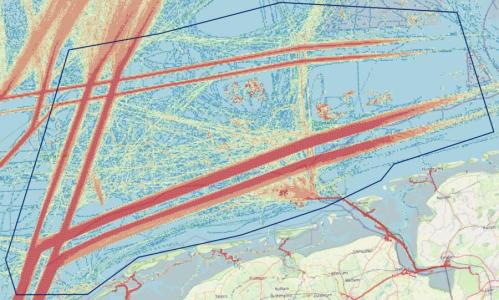EO AND GNSS DATA TO IMPROVE NAVIGATION SAFETY ASSESSMENT

With the increased frequency of shipping activities, such as tourism and freight’s transport, navigation safety has become a major concern, especially when human casualties, environmental issues and economic losses are considered. Even if new technologies have already supplied aids to pilots for the navigation risk reduction, the International Maritime Organization (IMO) reports that the majority of accidents could have been avoided by providing suitable input to the navigation decision-making process. The number of consequences due to accidents in open sea or close to the harbour is relevant, including loss of multiple human lives, pollution which leads to death of marine lives and cargo or infrastructures damage. In an autonomous shipping scenario, vessels will navigate following prescribed routes, adaptively changed based on risks and environmental conditions. GNSS and its augmentation systems will represent the key enabling technology to attain safety of navigation, especially considering systems providing accuracy and integrity information. However, they may not be sufficient to assure safety of navigation, when ships are not using good quality GNSS receivers or switch off positioning systems. Also “non-collaborative” objects (ships/objects in the sea not transmitting AIS), such as natural and artificial debris, may represent possible hazards. Therefore, EO data can represent complementary or redundant information to improve traffic monitoring. Indeed, EO data can be used to detect sailing vessels with no AIS receiver and to compare the AIS position versus the position detected in optical and SAR images. The combined use of such EO data will increase the available information and could provide support to vessels detection (shape, dimension, and route). The current project relies on EO and GNSS information fusion that is not novel by itself, as from the inspection of SoA emerged that a number of other (ongoing) projects and services exploit different sources to address improvements in marine safety. However, the NARAS project has three important additional goals that are unique in comparison with the SoA on maritime applications:
- The utilization of the information of the features identified to improve navigation risk assessment models and to enable near real-time applications, including the modification of the planned or preferred routes (described by space-time waypoints and tolerances) set for either the shore assisted navigation or, in the future, for the autonomous ship navigation. This will exploit the previous technology developed by SATE and MARIN under a preceding ESA contract.
- The suitability of the approach defined to the combination of AIS/VTS data and SAR images with optical images to improve, when the latter are available, the detection of unreported features in the AIS system and the statistical evaluation of the accuracy of current positions data available through the AIS system or their alignment with EO extracted positions;
- The assessment of the benefits using MARIN risk model to quantify the collision risk with and without EO information.
With this novelty NARAS could enhance services already carried on by the coast guard which monitor possible hazards (i.e., objects/vessels in the sea not transmitting AIS) but in a considerable cost saving, wider coverage and automated way.
